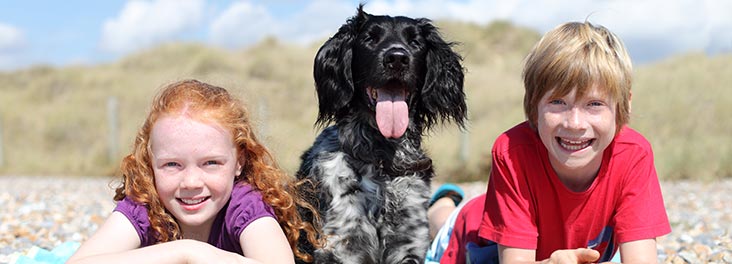Dogs and children can be good friends. Having a dog can help children develop kindness, understanding, and respect for living beings. The company of a dog can improve the social skills of a child with its environment, and the care of a pet promotes responsibility.
But so that the harmony between dogs and children is not always easy to build. Parents should teach their children to build a good relationship with the dog. For this reason, here are our best video tips:
Dogs and children communicate differently
From a dog's point of view, children are often stressed. For they cry, cry, cry, crawl and run with their arms. Dogs have difficulty understanding them.
This is why accidents are so common in families. Dogs that cannot understand each other can sting or bite. Here is an infographic that can be shown to children to understand their dog.
It is important that the adult takes responsibility for what happens at home, especially when there are children. It is not up to the child to manage the interactions with his dog alone. Both must feel safe at all times. Even if your children are too young to treat a dog, you can still teach them how to take care of or pet a dog.
Dogs and children
Dogs and children can be good friends and a dog can help children develop kindness, understanding, and respect for living beings. Dog society can improve a child's social skills with people and caring for a pet can promote responsibility.
For this reason, many families have dogs. Children quickly understand and learn to treat the dog as part of the family, but it is important that parents teach children how to stay safe near dogs in order to protect both the child and the dog.
Our best tips to keep kids safe and dogs happy
Watch our video with the best tips from our own Samantha Gaines, mother of a toddler, dog owner, and dog welfare expert.
Dogs and children communicate differently
From a dog's point of view, children communicate differently with adults; they cry, howl, scream, crawl and run with their arms. Dogs have difficulty understanding children and even more difficult to tell them if they want to be left alone!
Children often treat dogs like their peers; they hug, cuddle, hold and scold them. Children express their affection for their family through close face contact, for example through kissing. Although it may sound cute, a dog can find it threatening and it can be very dangerous.
For these reasons, younger children are more likely to be bitten than any other group and research shows that children are much more likely to be bitten by their family dog than others. However, there are many things you can do to ensure that your child is safe and that your dog is happy.
Help children and dogs to live together
We have teamed up with veterinarian and behavioral researcher Dr. Sophia Yin to develop a set of materials to help parents understand and recognize the behavior of dogs, which facilitates the safety of children and the happiness of dogs.

